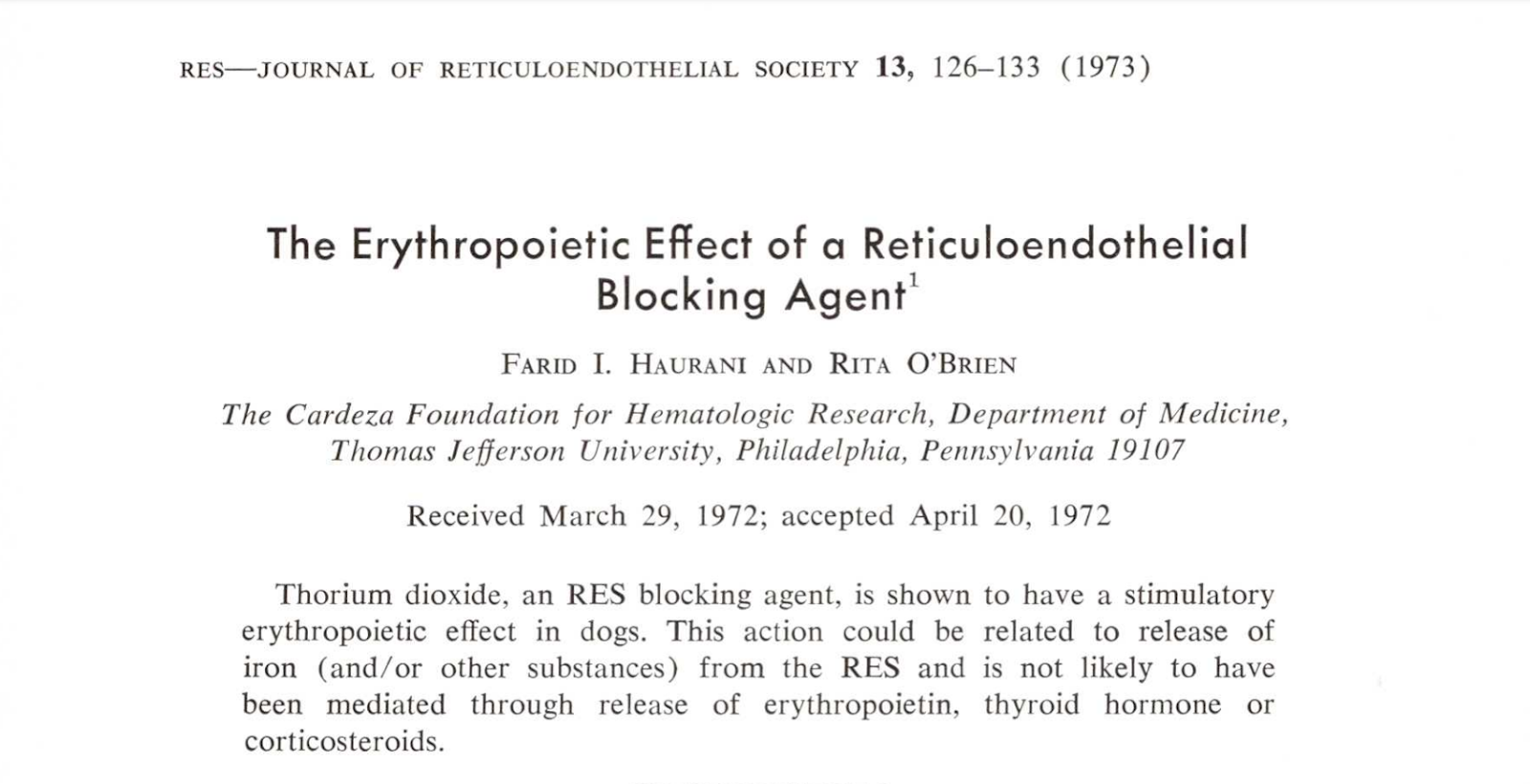| This Month in RES History - May '22 |
This Month in RES HistoryJoin Communication Committee member Samson Kosemani as he looks back into the great science hidden in the RES archives. The Erythropoietic Effect of a Reticuloendothelial Blocking Agent Hyperferremia can be caused by repeated intravenous injections of a reticuloendothelial blocking substance like colloidal thorium dioxide. Vanotti (1957) linked hyperferremia to enhanced hemolysis and hyperactivity of the RES. Cartwright and colleagues (1950) reported no increased excretion of urobilinogen in dogs given repeated thorium dioxide injections, and they proposed a slower rate of iron uptake from the blood by the RES as the most likely cause of hyperferremia. According to Haurani and O'Brien's study from 1972, thorium dioxide, a reticuloendothelial inhibiting agent, does increase erythropoiesis. Plasma iron turnover, absolute reticulocyte count, total red cell mass, and total hemoglobin mass were used to measure the increase in red cell production. The stimulation of erythropoiesis was not indirect, in the sense that it did not occur as a result of enhanced red blood cell hemolysis, as evidenced by the 51Cr tagged red blood cell survival and 58Fe red blood cell iron utilization curves Blood volume determination before and after thorium dioxide administration for calculation of total red cell mass and total hemoglobin mass, as well as absolute reticulocyte count determination, provided a more accurate index of response to a stimulating agent than hemoglobin concentration and reticulocyte count alone. The variations in hemoglobin mass and red cell mass were comparable, and there was no evidence that the injection of thorium dioxide caused the red blood cells to become hypochromic. Haurani and O'Brien reported that the stimulatory action of thorium dioxide on erythropoiesis was not likely mediated through the adrenal or thyroid glands since the levels of corticosteroids and thyroxine levels did not alter significantly following the administration of the blocking agent. Conclusively, thorium dioxide acts on the RES, releasing iron (and potentially other compounds), and the promotion of erythropoiesis could be attributed to the availability of high amounts of iron to the bone marrow, according to Haurani and O'brien. |




